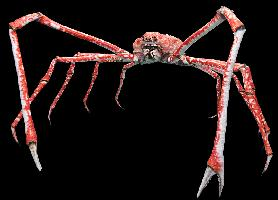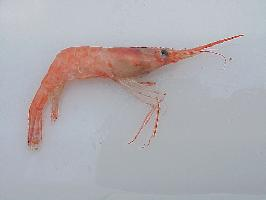
Biológiai adatok
| Élettartam | 100 r |
|---|
Állatleírás
The Japanese spider crab, scientifically known as Macrocheira kaempferi, is an extraordinary marine creature that commands attention due to its immense size and unique appearance. It holds the record for the largest leg span of any arthropod, a fact that has earned it notoriety and fascination in equal measure. This oceanic giant is a decapod, which means it is part of the order of crustaceans that includes ten-limbed animals, such as crabs, shrimp, and lobsters.One of the most striking features of the Japanese spider crab is its leg span, which can reach up to an astonishing 3.8 meters (12.5 feet) from claw to claw. This vast expanse gives the crab a spider-like silhouette, hence its common name. Despite their daunting leg span, the body of the Japanese spider crab is relatively small in comparison, typically only measuring up to 40 centimeters (16 inches) across the carapace. The carapace itself is rounded and adorned with various knobs and projections, which serve as camouflage by mimicking the rough texture of the ocean floor.
The coloration of these crabs is usually a muted blend of orange and cream, with patches that help them blend into their rocky ocean habitat. Their long, slender legs are also orange and are equipped with small hooks that aid in gripping surfaces and catching prey. These legs, while appearing delicate, are quite strong and enable the crab to carry itself along the sea floor with surprising agility.
Japanese spider crabs are found primarily in the waters around Japan, with their habitat extending from the southern coast of Honshu to the northern reaches of Kyushu. They tend to dwell in deep, cold ocean waters at depths ranging from 50 to 600 meters (160 to 2,000 feet), often residing in vents and holes within the deeper parts of the ocean.
The diet of these crabs is omnivorous. They are scavengers by nature, consuming both plant matter and animals. They feed on a variety of organisms, including dead fish, mollusks, and other crustaceans, as well as kelp and other types of algae. Their long reach allows them to forage over a large area on the ocean floor, picking at whatever edible materials they encounter.
Reproduction in Japanese spider crabs involves the male depositing sperm into the female, who then fertilizes her eggs and carries them under her abdomen until they hatch. The larvae are planktonic, meaning they float freely in the ocean currents, which aids in their dispersal. They go through several larval stages before settling on the ocean floor and beginning their lives as juvenile crabs.
Due to their large size, Japanese spider crabs have few natural predators, although they are sometimes preyed upon by large fish and octopuses. Humans also pose a significant threat to these crabs through fishing. They are considered a delicacy in some regions, and their impressive size makes them a sought-after catch for commercial and recreational fishers.
In terms of behavior, Japanese spider crabs are generally solitary and slow-moving. They are known for their gentle nature and, despite their formidable appearance, are not aggressive towards humans. The long lifespan of these crabs, which can be up to 100 years, coupled with their slow growth rate, means that individuals can survive for many decades in the wild, contributing to the stability of their populations.
In summary, the Japanese spider crab is a remarkable marine animal with an impressive leg span and a distinctive appearance that sets it apart from other marine species. Its adaptations to a life in the deep ocean, its feeding habits, and its reproductive cycle all contribute to its success as a species. However, as with many ocean dwellers, the Japanese spider crab faces challenges from human activity and changes in its marine environment.
Hasonló állatok
Új állatfotók
Top 10 állat
- Dolphin gull (Leucophaeus scoresbii)
- Japanese macaque (Macaca fuscata)
- Stone loach (Barbatula barbatula)
- Russian tortoise (Testudo horsfieldii)
- Galápagos tortoise (Geochelone nigra complex)
- Greek tortoise (Testudo graeca)
- Diana monkey (Cercopithecus diana)
- Common flying dragon (Draco volans)
- Moustached guenon (Cercopithecus cephus)
- Galápagos penguin (Spheniscus mendiculus)


